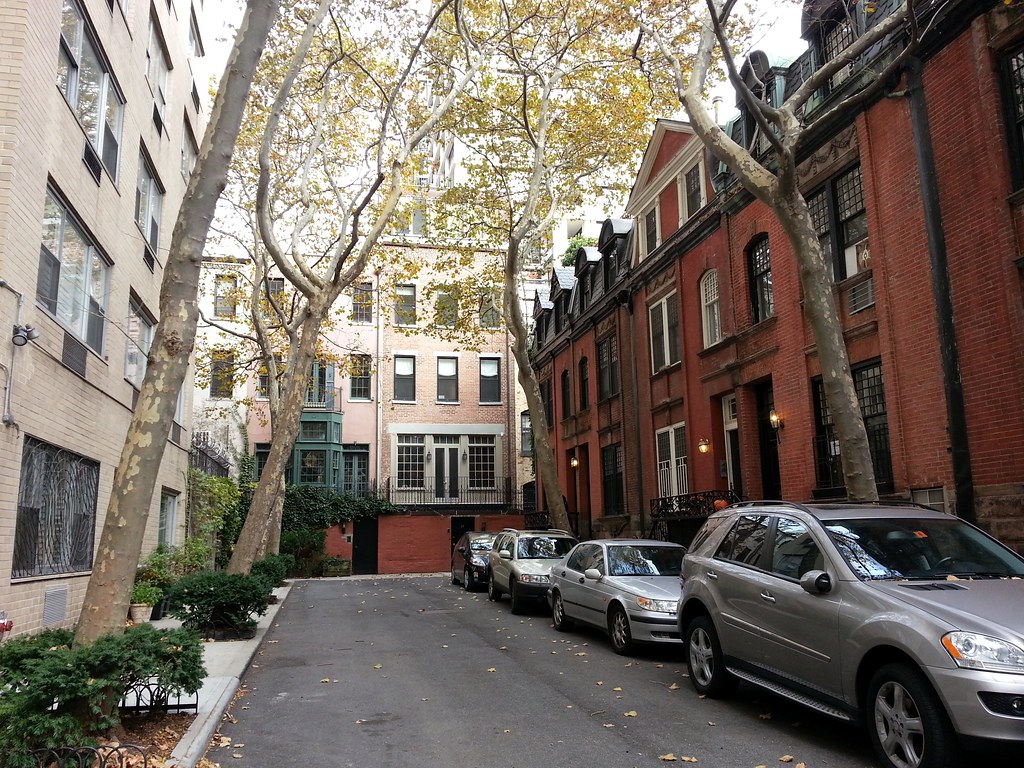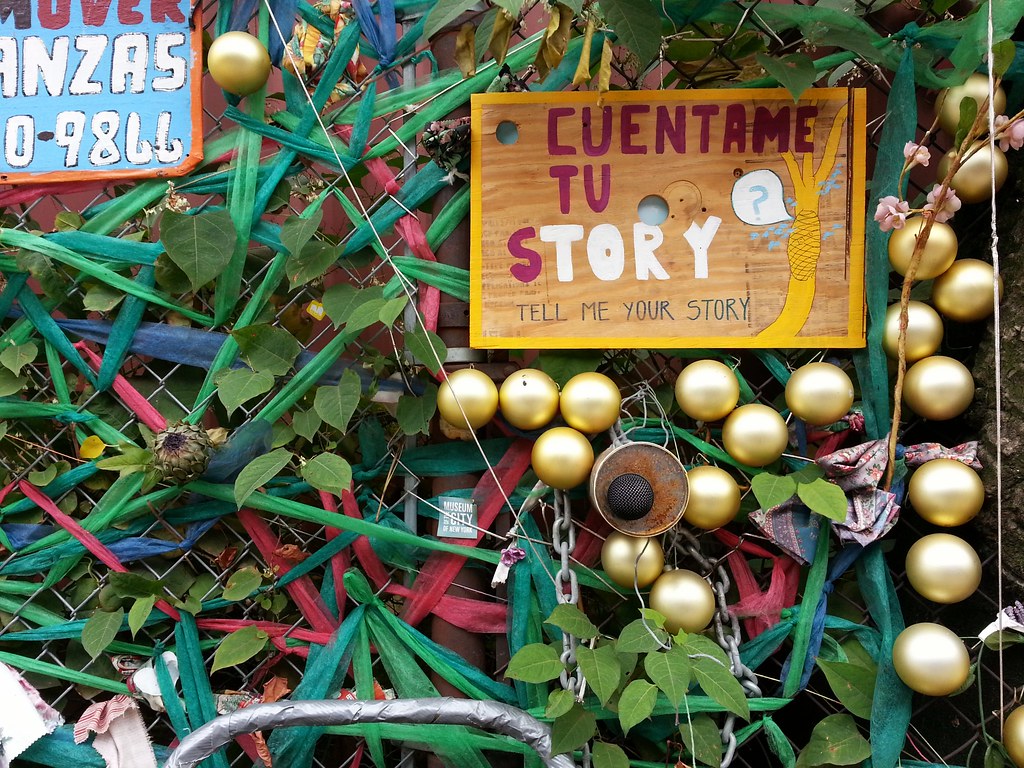

This building is Henry Stern's "mecca", and its tortoise-and-hare frieze serves as the logo for Stern's American Association for the Advancement and Appreciation of Animals in Art & Architecture — "AAAAAAA for short, or long."

This statue of the Greek muse has stood outside the Liederkranz Club — first on 58th Street, and now on 87th Street — since 1897.

In 1963, Andy Warhol rented the second floor of this former firehouse from the city for use as a studio.

at Carl Schurz Park (we saw a statue of Mr. Schurz in Morningside Park back in June), which is the site of Gracie Mansion, the official residence of the mayor. Bill de Blasio will be the first mayor in quite some time to actually live in Gracie Mansion, however: Mike Bloomberg hasn't spent a single night there during his 12 years in office, and Rudy Giuliani moved out late in his second term after his marriage fell apart.

This sculpture, originally created in 1928 as part of a fountain for the old Paramount Theatre in Times Square, has stood here in Carl Schurz Park since 1975, although it had to be restored and reinstalled after it was abducted and thrown into the East River in 1998 by a suspected "band of overly high-spirited youths, perhaps latter-day Lost Boys who turned on their own icon."

"The tiny Queen Anne-style red-brick enclave of Henderson Place, at the eastern end of 86th Street, has long seemed out of place in a high-rise city - its dollhouse architecture is dwarfed by its surroundings."

I've been paying attention to standpipe and sprinkler connections for quite some time now, but it wasn't until today that I started seeing (or noticing) little faucets on some of them. I'm not sure, but I think they allow the connecting pipes inside the building to be drained after being used or tested.

A Grand Central-bound New Haven Line train approaches the northern end of the Park Avenue railroad tunnel.

I can't find any information about this bizarrely decorated fence located across Park Avenue from the Metro-North railroad viaduct here in East Harlem. You can see a little piece of paper with the logo of the nearby Museum of the City of New York just to the left of the rusty microphone-can thing, but I don't believe the museum is actually affiliated with this in any way.

through the massive stone structure that serves as the southern portion of the Park Avenue railroad viaduct

This unusual-looking building houses various city and medical offices, a public school, and Metropolis Studios, where Who Wants to Be a Millionaire is currently filmed. It was once home to the NBC-TV Uptown Studios, and was originally known as the Pathé Building (here's a photo from its early days).

A former meat market at the sub-railroadian La Marqueta. Check out its three other vestigial murals, all of which feature oversized animals standing on trucks.

There's only one way this barbershop could possibly get any better. And I think you know what that is.
This is the granddaddy of all old-school graffiti shrines, now in its 37th year. The hall is not a museum of vintage graffiti but an ever-changing canvas for new pieces whose lineage stretches back to subway art and stars of the first wave of graffiti, like Blade, Seen, Lee Quiñones, Dondi and Iz the Wiz.It's located in a public school playground that's closed to the public on weekdays during the school year, so this was the best shot I could get. This is the largest mural (more info here); you can see some shots of other current pieces here.

Once "portrayed as a champion of women's health", this 19th-century "father of modern gynecology" has in recent decades become a controversial figure for his practice of performing experimental surgery on enslaved black women.

Sculpted by Adolph Weinman (remember him?), this statue of the senator, mayor, governor, and driving force behind the Erie Canal stands outside the Museum of the City of New York. It's joined by a statue of Alexander Hamilton, also created by Weinman.

This surviving fort from the War of 1812 is the oldest building in Central Park.

in Central Park: "This stretch . . . is a masterpiece of landscape manipulation. As visitors follow the streamside path, they see the noisy, sunny brightness of the Cascade disappear into the silent, tomb-like darkness inside the massive arch."

















